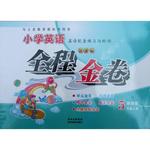题目内容
Well, more and more companies are beginning to create products and services for teenagers. The Disney Company sells the Hannah Montans television show, music, film and merchandise(商品) to teenagers and their parents. You can get everything from branded lunchboxes and mobile phone covers, to monthly fan magazines and clothing. The High School Musical series of films is also intended for a teenage audience. So, it’s all about sales, which tells us teenagers must have more money, freedom and influence upon their parents than they’ve ever had before.
UK teenagers never used to be worried about spending money on clothes and fashion accessories(附加物). That’s changed. Now, they are much more fashion conscious and concerned about their image. In a world of television programmes that promise overnight success and fame at a young age (for example, the shows Britain’s Got Talent and American Idol), some people think it’s extremely important to look fashionable.
So what does teenage fashion look like? Well, it’s quite horrible really, but then I’m a bit too old to appreciate it, I suppose. It’s lots of brightly coloured materials, particularly pink, and usually plain, not patterned. There are plenty of bows, necklaces and bracelets(手镯), too. It’s all very cute(可爱的), if that’s your taste.
Surely none of the above is a good thing, is it? Can it really be healthy for us to encourage kids to be like adults at such a young age? Are we stealing childhoods in return for a bit of profit? Well, the UK government is certainly concerned, and for that reason has strict laws preventing companies from explicitly(明确地) marketing their products and services at children.
Even the rest of UK society is concerned. Now that people are aware of the problem, there is a popular backlash(强烈反应) against the exploitation(利用) of children by commercial marketing.
1.It can be inferred from the passage that the teenagers nowadays .
A. often ask their parents to buy things for them
B. always have more than enough money on their clothes
C. can’t enjoy their childhood though they are rich in material
D. are satisfied with their material life and worry about nothing
2.The author of the passage .
A. supports teenage fashion quite a lot
B. is fond of brightly colored materials that are to his taste
C. thinks it illegal to make profits by selling things to kids
D. is strongly against marketing products and services at children
3.The passage is mainly about .
A. British teenagers who are interested in fashions
B. UK companies targeting products at children
C. a social problem concerning teenagers in the UK
D. products that aim at young people in England
 名校名师培优作业本加核心试卷系列答案
名校名师培优作业本加核心试卷系列答案 全程金卷系列答案
全程金卷系列答案
